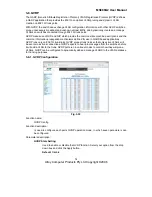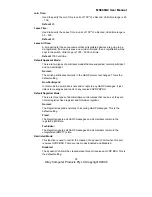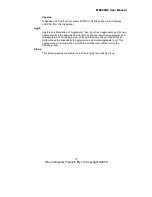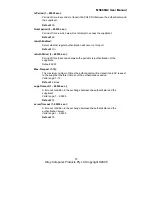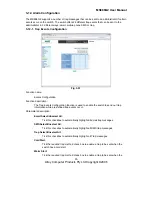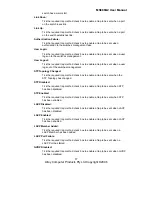
MS888G2 User Manual
72
Alloy Computer Products Pty Ltd Copyright ©2006
3-10. Trunking Configuration
Port Trunking is used to Aggregate Ports into a logical trunk usually called Link Aggregation. Link
Aggregation can bundle more than one port with the same speed, full duplex and the same MAC
address to be a single logical port, thus the logical port aggregates the bandwidth of these ports.
This allows the switch to aggregate multiple ports together to form a high bandwidth backbone
link.
The MS888G2 supports two kinds of trunking methods:
LACP:
Ports that are using Link Aggregation Control Protocol (according to the IEEE
802.3ad standard) as their trunking method can choose their unique LACP
Group ID (1-3) to form a logical “Trunked Port”. The benefit of using LACP is that
a port makes an agreement with its peer port before it becomes a ready member
of a “Trunk Group” (also called Aggregator).
The MS888G2 LACP function does not support the following:
- Link
Aggregation
across
switches
-
Aggregation with non IEEE 802.3 MAC links
-
If the ports are operating in Half Duplex mode
-
Aggregate the ports with different data rates
Static Trunk:
Ports that are using Static trunk as their Trunk method can choose their unique
Static Group ID (also 1 – 3, this static group ID can be the same as a LACP
group ID) to form a logical “Trunked Port”. A benefit of using Static Trunking is
that a port can become a member of a trunk group without any handshaking with
its peer port. This can also be a disadvantage because the peer ports of the
Trunk group may not know that the ports should be aggregated together to form
a trunk group. Using Static trunking at both ends of the link is highly
recommended.
The MS888G2 allows up to 3 LACP trunk groups and another additional 3 trunk groups for static
trunking. Only 3 groups can be used at one time. Each trunk group can contain a maximum of 4
member ports.




